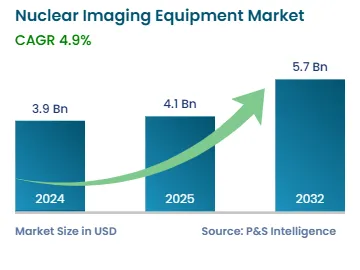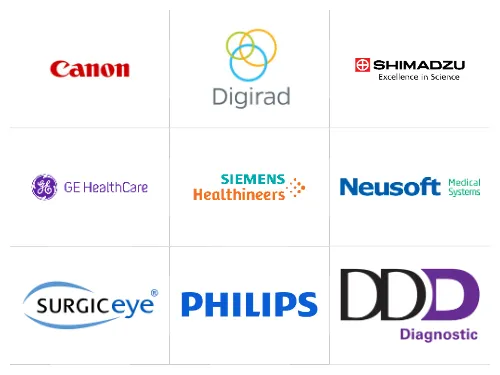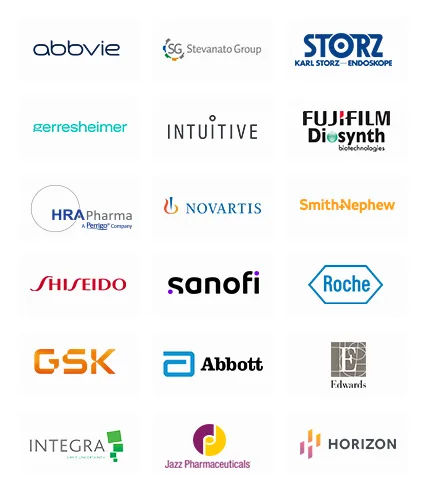Nuclear Imaging Equipment Market Future Prospects
The nuclear imaging equipment market size stood at USD 3.9 billion in 2024, and it is expected to grow at a CAGR of 4.9% during 2025–2032, to reach USD 5.7 billion by 2032.
The market size is expected to increase as a result of the aging population, rising healthcare costs, and surging demand for imaging procedures. Moreover, the increasing rate of cancer and heart disease are the main reasons propelling market expansion.
Nuclear imaging is a modern method that makes use of minute amounts of radiotracers, which are molecules related to those employed by the body’s cells; they bind to tumor cells. A detector measures the amount of radioactive decay from the tracer within the body, to figure out when and where it concentrates, by measuring the amount of the radioactive material absorbed by the target tissue. This method can enhance clinical research, medical diagnosis, and treatment, while also enhancing illness prevention.
The most-common way to administer radiotracers in nuclear medicine is intravenous. They can be taken orally in some investigations. These tracers have no negative effects and are neither dyes nor medications. Typically, a patient only receives a small quantity of radiation during a typical nuclear medicine scan.
The shift from standalone to hybrid modalities, improvements in radiotracers, growing emphasis on personalized medicine, investments made through public–private partnerships to modernize diagnostic centers, and the rising incidence of cancer and cardiac conditions are the main driving factors for the demand for PET and other similar scanners.
The need for better diagnoses is being addressed by advanced healthcare IT solutions. In terms of the clarity and accuracy of the scans, technologically improved devices have surpassed traditional techniques. Over the past 10 years, hybrid systems have seen tremendous progress as a result of the advances in imaging technology. The combined PET methods represent significant advancements in this regard.
The global availability of healthcare resources has been considerably impacted by the COVID-19 pandemic. The pandemic was controlled, in part, by drastically reducing in-patient and out-patient services for other illnesses and putting in place concrete infection prevention and control measures. Hence, the volume of nuclear imaging tests for diagnostic and therapeutic purposes sharply decreased as the epidemic spread to several nations.
The majority of the heart patients are often older than 60 and thus, at an extremely high risk of conditions such as diabetes, hypertension, chronic renal and lung disorders, and cancer. They are also extremely susceptible to COVID-19 as a result of their low immunity, which has decreased the demand for nuclear imaging treatments. However, a lot of medical professionals think that this drop in treatments is only temporary.



